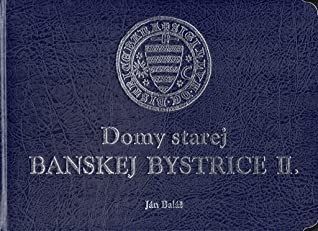| SAPISID |
google.sk
|
Trvalé |
Spoločnosť Google zhromažďuje informácie o návštevníkoch videí hostovaných v službe YouTube. |
| HSID |
google.sk
|
2 roky |
Bezpečnostný súbor cookie na potvrdenie pravosti návštevníka, zabránenie podvodnému použitiu prihlasovacích údajov a ochranu údajov používateľa pred neoprávneným prístupom. |
| __Secure-1PSIDCC, __Secure-1PSID |
google.com
|
1 rok |
Súbor cookie potrebný na používanie možností a služieb webovej stránky. |
| HSID |
google.com
|
2 roky |
Bezpečnostný súbor cookie na potvrdenie pravosti návštevníka, zabránenie podvodnému použitiu prihlasovacích údajov a ochranu údajov používateľa pred neoprávneným prístupom. |
| SSID |
google.sk
|
trvalé |
Spoločnosť Google zhromažďuje informácie o návštevníkoch videí umiestnených v službe YouTube na mapách integrovaných s Mapami Google. |
| SIDCC |
google.com
|
3 mesiace |
Bezpečnostný súbor cookie na potvrdenie pravosti návštevníka, zabránenie podvodnému použitiu prihlasovacích údajov a ochranu údajov návštevníka pred neoprávneným prístupom. |
| SID |
google.com
|
2 roky |
Bezpečnostný súbor cookie na potvrdenie pravosti návštevníka, zabránenie podvodnému použitiu prihlasovacích údajov a ochranu údajov návštevníka pred neoprávneným prístupom. |
| APISID |
google.sk
|
2 roky |
Prispôsobuje reklamy Google na webových stránkach na základe nedávnych vyhľadávaní a interakcií. |
| DV |
google.com
|
7 minút |
Tento súbor cookie sa používa na uloženie preferencií používateľa a ďalších informácií. Patrí sem najmä uprednostňovaný jazyk, počet výsledkov vyhľadávania, ktoré sa majú na stránke zobraziť, ako aj rozhodnutie, či má byť aktivovaný filter Google SafeSearch alebo nie. |
| _dd_s |
pantarhei.sk
|
20 minút |
Ide o analytický súbor cookie od spoločnosti Datadog, ktorý sa používa na ukladanie údajov týkajúcich sa výkonu webovej lokality. Súbor cookie sa vytvorí, keď spustíme knižnicu JavaScript a nie je prítomný súbor cookie _dd_s. |
| _gid |
pantarhei.sk
|
1 deň |
Tento súbor cookie inštaluje služba Google Analytics. Tento súbor cookie sa používa na ukladanie informácií o tom, ako návštevníci používajú webové stránky, a pomáha pri vytváraní analytickej správy o tom, ako sa webovej stránke darí. Zhromaždené údaje zahŕňajú počet návštevníkov, zdroj, odkiaľ prišli, a navštívené stránky v anonymnej podobe. |
| _ga |
pantarhei.sk
|
2 roky |
Súbor cookie _ga, ktorý inštaluje služba Google Analytics, vypočítava údaje o návštevníkoch, reláciách a kampaniach a tiež sleduje používanie stránky pre analytickú správu. Súbor cookie ukladá informácie anonymne a na rozpoznanie jedinečných návštevníkov priraďuje náhodne vygenerované číslo. |
| OTZ |
google.com
|
1 mesiac |
Prepojenie aktivít návštevníkov webových stránok s inými zariadeniami, ktoré boli predtým prihlásené prostredníctvom účtu Google. Týmto spôsobom sa reklamy prispôsobujú rôznym zariadeniam. |
| LaVisitorNew |
pantarhei.sk
|
1 deň |
Tento súbor cookie sa používa na počítanie toho, koľkokrát navštívili webovú lokalitu rôzni návštevníci - robí sa to tak, že sa návštevníkovi priradí ID, aby sa návštevník nezaregistroval dvakrát. |
| _hjSession_**** |
hotjar.com |
30 minút |
Súbor cookie, ktorý uchováva aktuálne údaje relácie. Vďaka tomu budú nasledujúce požiadavky v rámci okna relácie priradené k tej istej relácii Hotjaru. |

























